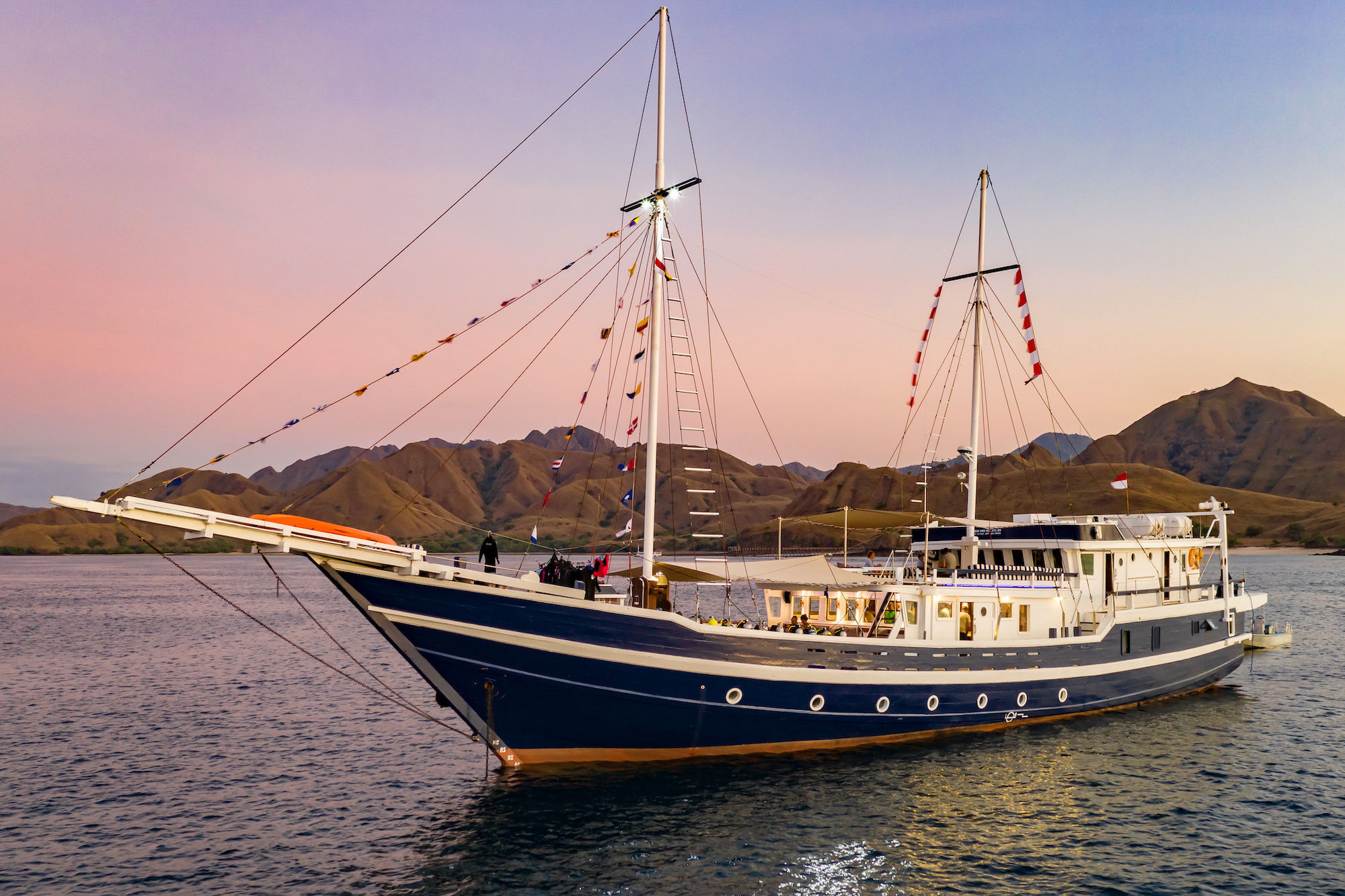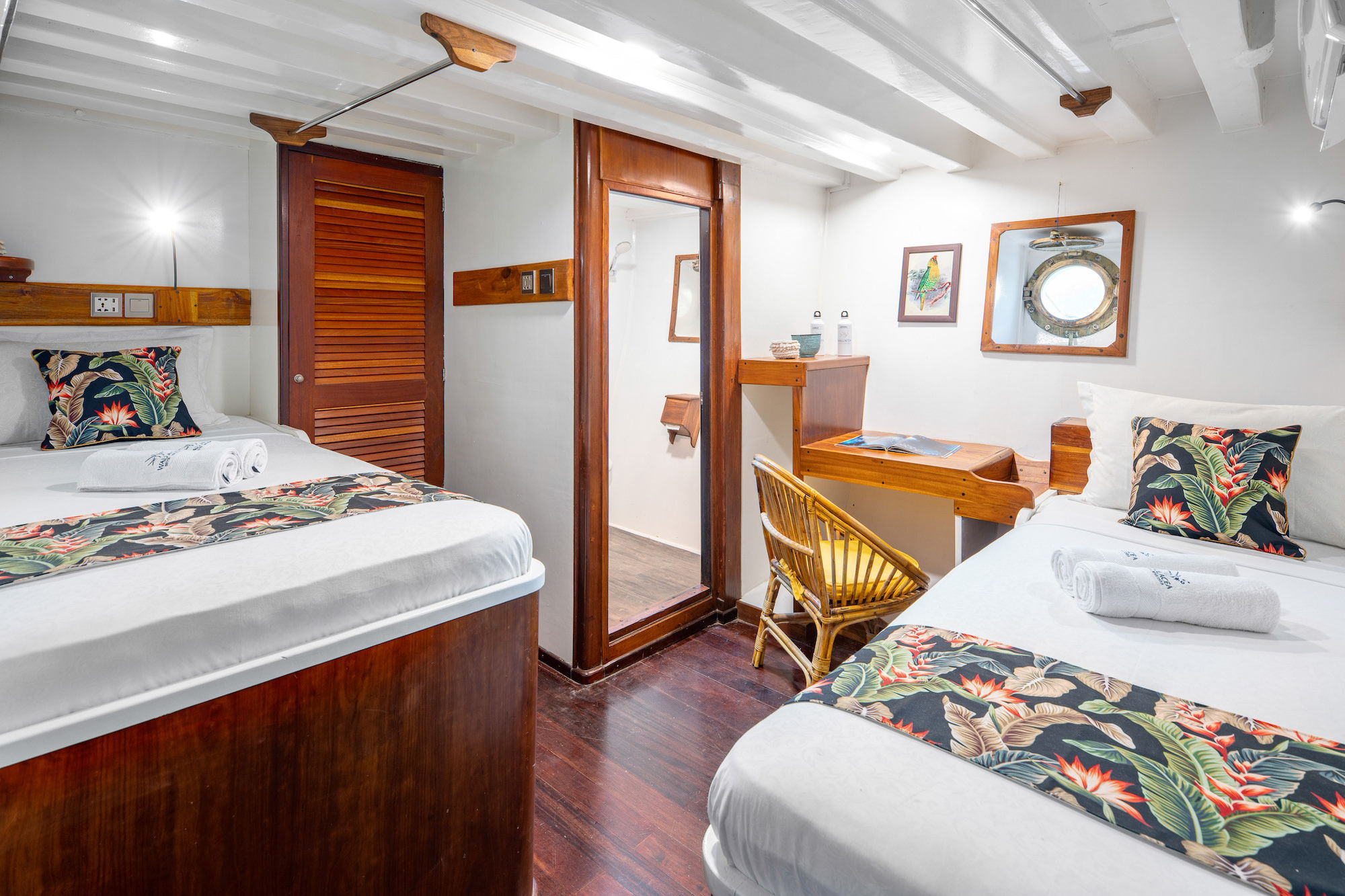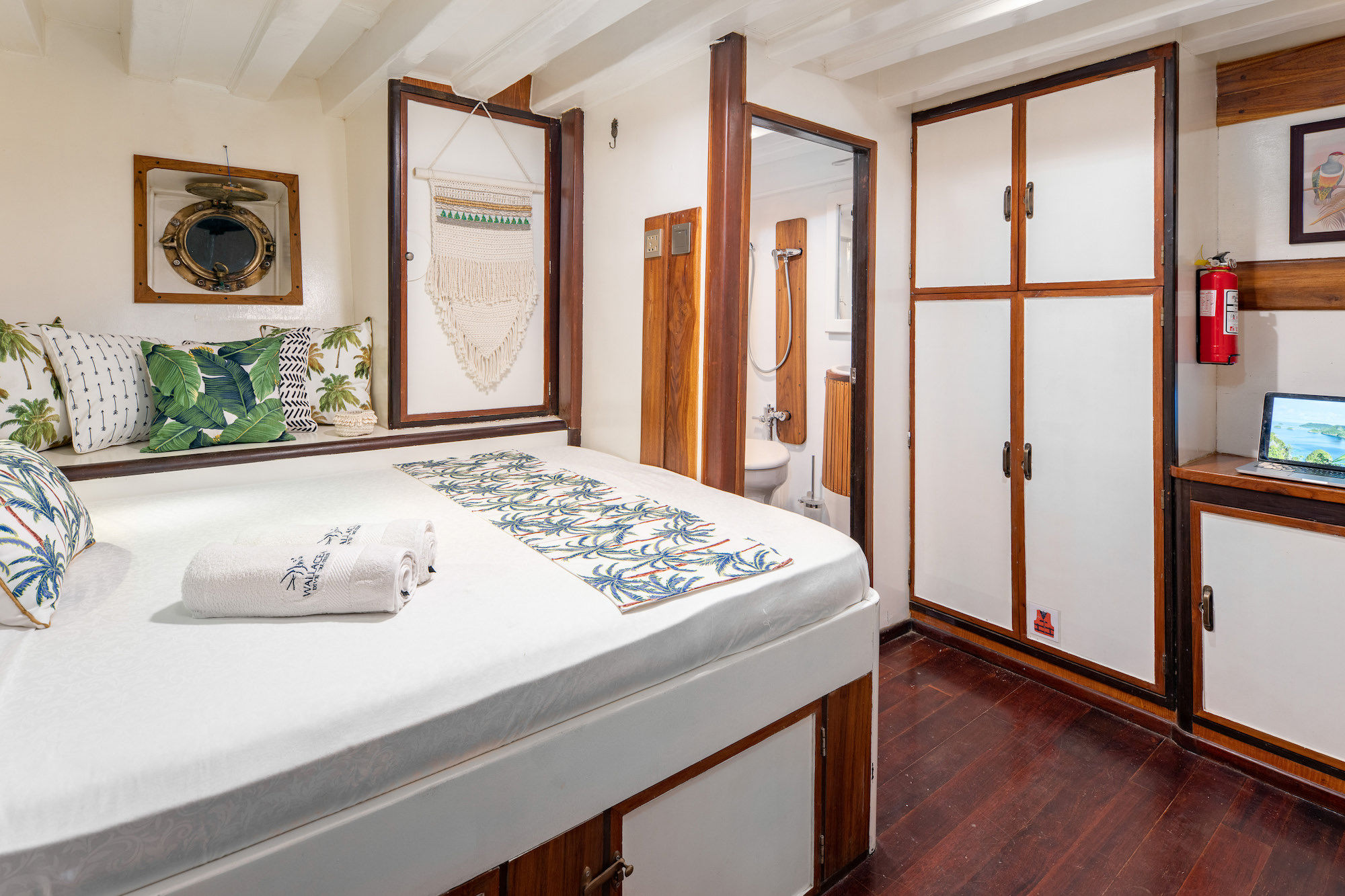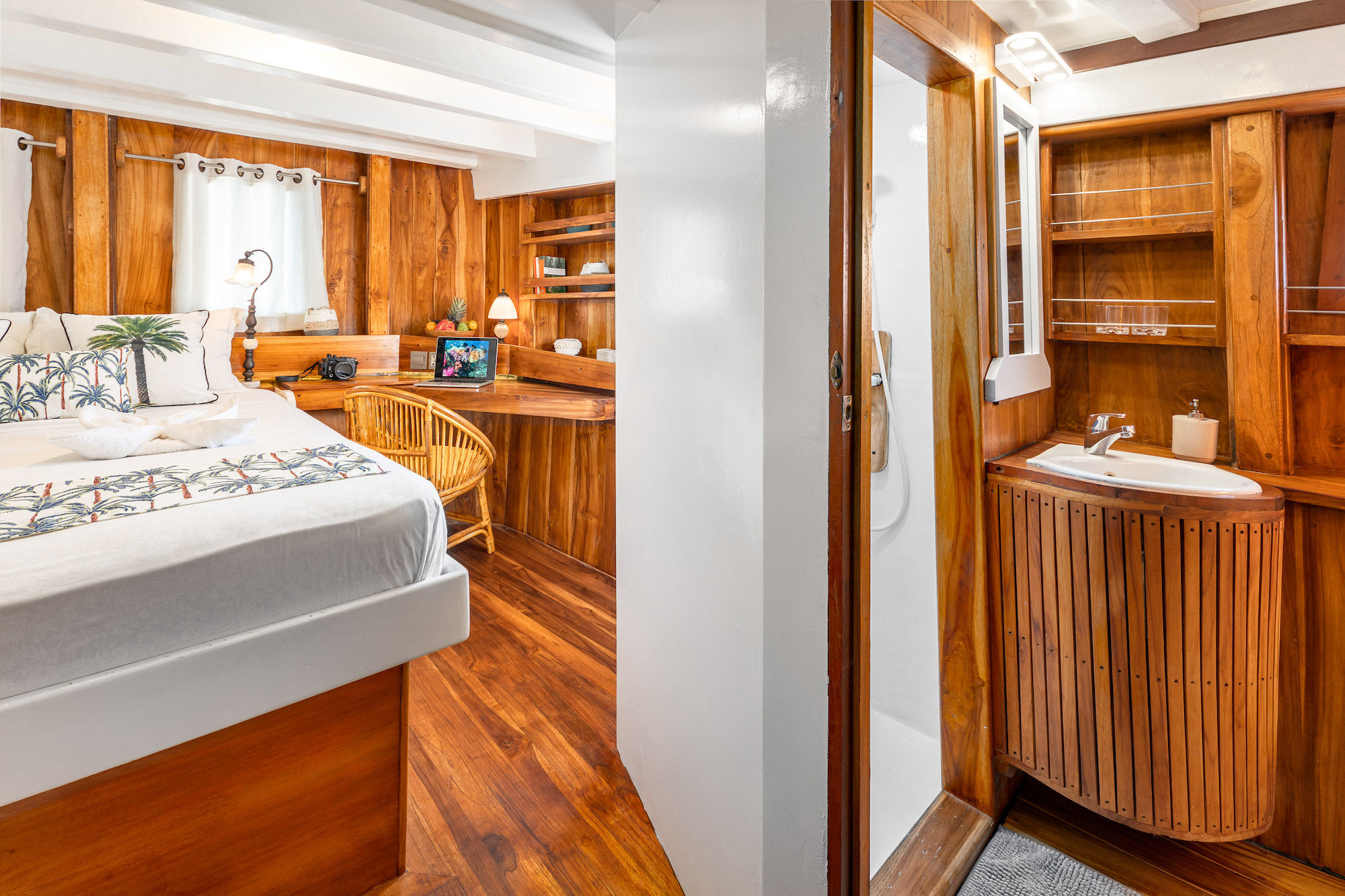日程安排
Located in the strait of the same name at the confluence of the Indian Ocean and the Banda Sea, The Komodo National Park features one of the world’s richest and most diverse marine environments—thanks to the overflowing currents in the area. Also renowned as the home of the famous Komodo Dragon, it is certainly one of the best scuba diving destinations that you can find on the planet.
In the north, you can find a collection of the world’s most beautiful varieties of reefs, boasting a rich combination of hard and soft corals, shoals of antheas, wrasses, angelfishes, and also predators—reef sharks, tunas, and giant kingfishes. In the south, you will see more soft corals with an amazing profusion of colors, and even more macro (and manta rays too!). The water is rather cold and the temperature can drop down to 23 ° C in July and August.
Komodo offers a wide variety of dives: pelagic dives with sharks in strong currents, gentle drift dives, wall dives (colorful drop-offs, monumental boulders, seamounts, pinnacles, and sandy slopes), and macro dives. You can also find manta rays, turtles, and if you are lucky enough, some whale sharks!
DAY 1
Safety Briefing, Crew Introduction, Necessary Dive Paperwork, Cabin allocation, and ship orientation will take place before departing the Harbour. During the journey to our first dive site for a check dive, please take this opportunity to familiarize yourself with the vessel and make yourself comfortable. Check dive. Please Note: This is a sample itinerary and nº of dives, dive sites, etc. may be subject to change due to weather conditions and other unforeseeable factors
DAY 2
Located in the strait of the same name at the confluence of the Indian Ocean and the Banda Sea, the Komodo National Park features one of the world’s richest and most diverse marine environments-thanks to the overflowing currents in the area. In the north, you can find a collection of the world’s most beautiful selection of reefs, boasting a rich combination of hard and soft corals, shoals of anthias, wrasses, angelfishes, and also predators-reef sharks, tunas, and giant kingfishes. In the south, you will see more soft corals with an amazing profusion of colors, and even more macro (and manta rays too!). The water is rather cold and the temperature can drop to 23° C in July and August. Komodo offers a wide variety of dives: pelagic dives with sharks in strong currents, gentle drift dives, wall dives (colorful drop-offs, monumental boulders, seamounts, pinnacles, and sandy slopes), and macro dives 3 dives in the most Northern part of the park Dive Castel rock, Caldron, two highlights action dives of the park, rocks with prolific fish life. End of the day ascending a mount to admire the sunset and the magnificence of the Komodo mountains
DAY 3
4 Dives You are now in the north area with clear and warm waters. The dive choice depends here greatly on the tides, as some of them must imperatively be dived at a certain stage of the tide. Sites offered are Batu Bolong (a rock with dramatic seascape, huge boulders, and prolific fish life including reef sharks, napoleon wrasses, giant trevallies, etc), Batu Mandi, Tatawa Besar ( a drift with the best soft corals of the park), Tatawa Kecil, Siaba. 2 dives We are now in the most Northern part of the park and will dive Castel rock, Caldron (a passage between 2 islands with a beautiful sandy garden of coral, soft corals, great fish life), two highlights action dives of the park, rocks with prolific fish life. End of the day ascending a mount to admire the sunset
DAY 4-5
4 Dives. You are now in the northern area with clear and warm waters. The dive choice depends here greatly on the tides, as some of them must imperatively be dived at a certain stage of the tide. Sites offered are Batu Bolong (a rock with dramatic seascape, huge boulders, and prolific fish life including reef sharks, napoleon wrasses, giant trevallies, etc), Batu Mandi, Tatawa Besar ( a drift with the best soft corals of the park), Tatawa Kecil, Siaba. 2 dives We are now in the most Northern part of the park and will dive Castel rock, Caldron (a passage between 2 islands with a beautiful sandy garden of coral, soft corals, great fish life), two highlights action dives of the park, rocks with prolific fish life. At the end of the day ascends a mount to admire the sunset. You go North to the Island of Padar where we will do 2 dives, according to the tide and eventual swell, dives will be 3 sisters (complexes of 3 pinnacles, rich in critters and fish life), Pilarsteen, No problem, before to cross again the channel and do our 3rd dive in Pantai Merah. A night dive will be offered. Opportunity for a short walk on the island from the Pantai Merah beach.
DAY 6-7
4 dives At dawn, we will cross the channel between Komodo and Rinca. The first dive in South Rinca is the famous cannibal rock, a great abundance of critters (frogfish, Coleman shrimps and zebra crabs on fire urchins, rare nudibranchs, leaf fishes, sea apples), on a reef well covered with soft corals. A phillodesmium in cannibal rock 2nd dive on Yellow wall, with its incredible colors of soft corals, feather stars, and green and yellow tubastrea corals. Afternoon dive and night dive on Torpedo, an interesting muck dive site. Water is generally cold, 22 to 24 °C. We generally can see the Komodo dragons on the beach in this area.
DAY 8-9
Morning dive on the West of Komodo, before going further south where you will dive Manta Alley, a famous dive site for its Manta cleaning station. The water is cooler in this area and can be as low as 22° C. 2 dives on Manta alley, Night dives on the coast.
DAY 10
4 dives 1-morning dive in Banta Island (Tanjung Rusa or GPS point), then the two following dives Night dive on the west coast of Komodo island. Anchorage in the magnificent bay of Loh Srikaya. 3 dives.
DAY 11
2 dives in the morning depending on guest flight schedules and the 24-hour requirement before flying.
DAY 12
Last day of the cruise. Farewell and group pictures. Disembarkation and assistance for check-in at Labuanbajo Airport.
The last dive will be on the penultimate day of the trip. Divers are recommended to wait for 24 hours before flying after the last dive.
Sample itineraries and maps are for illustrative purposes only. The exact route and sites visited are subject to change based on local regulations, guest experience, weather, and logistics, and are at the Captain’s discretion.
 微信扫码添加人工客服
微信扫码添加人工客服



